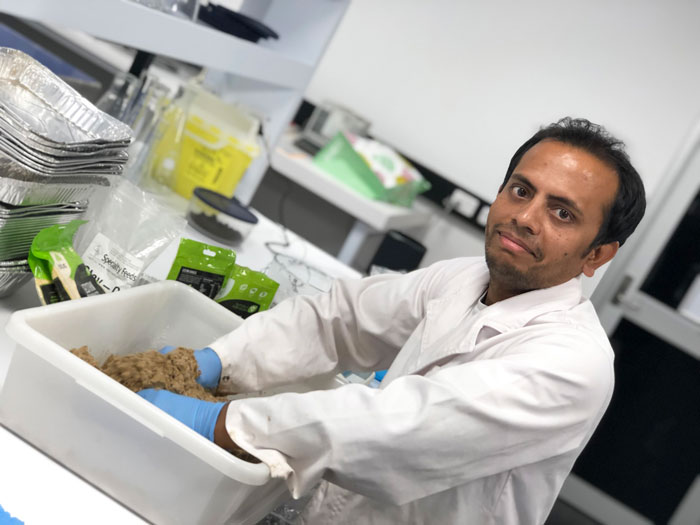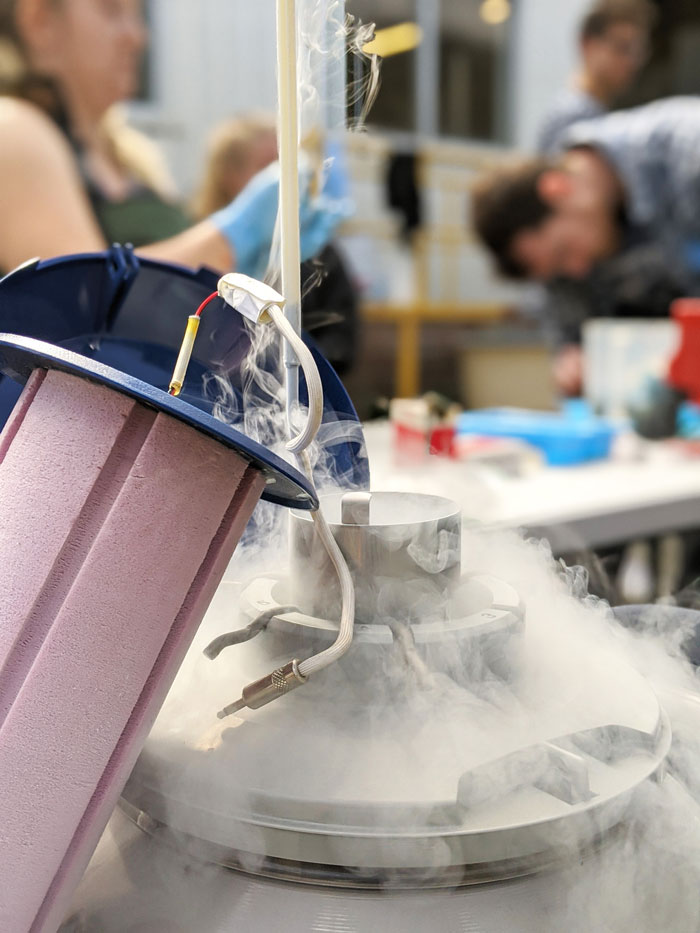The transformation of local waste products is providing quality protein ingredients that could help replace fishmeal as the protein source in aquafeeds
Insect meal and an enzyme hydrolysate, both produced using fish waste, have proven to be key components of new diets formulated to test whether juvenile Barramundi (Lates calcarifer) can survive and thrive without fishmeal in their feeds.
Trials undertaken at Curtin University in Western Australia used feeds incorporating both ingredients and found they produced a range of beneficial outcomes – from healthy fish with good disease resistance to superior-quality fillets with an extended shelf life.
The research is the work of PhD candidate Reaz Chaklader, who is examining potential uses for waste products and investigating substitutes for fishmeal proteins in aquafeeds.
Chaklader says identifying alternative, locally available ingredients may offer cost savings for feed production, improve the overall sustainability of the industry and even offer improved performance from farmed fish.

The protein ingredients for his trials included:
- poultry by-product meal (PBM);
- insect meal produced from the larvae of Black Soldier Flies that had been raised on whole fish waste (carp); and
- liquid fish hydrolysate from one of three sources – carp, mixed-species finned fish processing waste or Southern Bluefin Tuna (SBT, Thunnus maccoyii) processing waste.
The trials used 10-gram Barramundi fry, raised for 56 days, which grew to more than 100 grams.
PMB is the primary protein substitution for fishmeal, as the most readily available and cost-effective alternative. However, Chaklader’s first trial quickly established that simply exchanging 100 per cent of fishmeal in a standard commercial feed formulation with 100 per cent PBM is not an adequate diet for Barramundi.
His second trial assessed 10 per cent insect meal with varying ratios of PBM and fishmeal: 10:45:45, 10:60:30 and 10:75:15. All diets provided a comparable performance for fish in terms of feed conversion and growth rates to the commercial control diet.
No fishmeal
A third trial eliminated fishmeal protein completely, replacing it with a combination of insect meal and PBM. The insect meal was added at rates of 10, 15, 25 and 30 per cent. All diets with insect meal of 15 per cent or more resulted in equivalent fish health and growth outcomes.
An expert panel also conducted sensory trials comparing fillets produced from fish fed the control diet and those raised with the insect meal and PBM diets. The panel found improved taste and quality in the insect-fed fillets at all feed ratios.
A fourth trial added liquid fish enzyme hydrolysates to the mix, produced either from whole carp, mixed finfish waste or SBT waste, added at a rate of 10 per cent hydrolysate to 90 per cent PBM. Again, fish performance was comparable to those fed a control diet, with some improvements in physiological measures, including gut health and blood markers.
The young Barramundi in the fourth trial were also challenged by exposing them to fish pathogen Vibrio harveyi, which has previously caused mass deaths among farmed Barramundi.
Chaklader says the fish in this fourth trial fed with the new diets appeared to show an enhanced resistance to the bacterium compared to fish fed with the control diet. The best performance was among those fed with 10 per cent SBT hydrolysate.
In the final trial, the tuna hydrolysate, insect meal and PBM were combined in differing ratios: 10:10:80, 10:5:85 and 5:5:90. All diets in this final feed trial produced comparable growth rates to the commercial diet with improvements in fish gut microbiome and immunity.
Food science findings
Fillets produced from the final trial were also tested for fillet quality and for long chain omega-3 fatty acids. Results were comparable to those fed the control diet.
“There are concerns that when you reduce the fishmeal ingredients in farmed fish you also reduce the beneficial omega-3s. But we found that even with low levels of hydrolysate and insect meal, the levels were similar,” explains Chaklader.
Shelf life testing over eight days was undertaken for fillets produced in the final trial. The results found fillets from the trial diets were in better condition at day eight than those produced from fish on the control diet. Chaklader says it appears that including insect meal helps reduce the lipid oxidation that is largely responsible for food spoilage.
Chaklader’s PhD project is supervised by Ravi Fotedar and Janet Howieson at Curtin University’s School of Molecular and Life Sciences, and was supported in part by the FRDC.
Howieson says assessing the end-use quality attributes of fish fillets produced as a result of the different diets has been an exciting extension of traditional aquafeed nutrition research, which is often conducted independently of work on the resulting food products.
“Bringing together animal nutrition and food science has been an innovative part of the project, identifying early in the sustainable aquafeed development how the new feeds influence the end product,” she says.
Also underway is a project to evaluate similar feed formulations for Marron (Cherax cainii), a crustacean farmed in Western Australia and South Australia.

Building capacity
These projects are part of a collaborative push involving the state government, universities and industry partners to build research capacity in aquafeeds and novel feed ingredients in WA.
Gavin Partridge is the principal research scientist for finfish within the aquaculture research and development division of the WA Department of Primary Industries and Regional Development (DPIRD). Increasingly his work is focused on new aquafeeds, with ingredients such as single cell proteins produced using methane as a feedstock, and insect meal produced locally by Future Green Solutions using Black Soldier Flies to upcycle nutrients from organic waste to produce insect protein.
These are among ingredients being assessed by his team as part of an FRDC-funded project evaluating dietary supplements to improve the health of farmed Yellowtail Kingfish (Seriola lalandi). Other ingredients include plant-based oils selected for specific beneficial properties. Project partners include Future Green Solutions, feed manufacturer Ridley Aquafeeds and Yellowtail Kingfish farmer Indian Ocean Fresh Australia.
Partridge is also involved in an FRDC-funded project looking specifically at the potential for insect meal as a replacement for fishmeal in feeds for a range of species. Project partners are Future Green Solutions, Ridley Aquafeeds and the University of Western Australia (UWA). PhD candidates Katarina Doughty and Isobel Sewell from UWA have been undertaking the trials involved, looking at feeds for Barramundi, Rainbow Trout (Oncorhynchus mykiss) and Marron.
The results of these projects, while still being finalised, indicate the defatted insect meal can replace 50 per cent of fishmeal in diets for these species. For Future Green Solutions, the trial results have validated the company’s expansion plans. Its current pilot plant in Perth will give way to a new commercial facility north of Perth, producing 20 tonnes of insect meal a day. This is based on daily consumption of 300 tonnes of organic waste as feedstock for the larvae. The new plant is expected to open in 2023.
Commenting on the research and collaborations underway, Partridge says they are about identifying replacement ingredients and supplements to boost fish performance and improve the sustainability of local aquaculture, with potential for local production of ingredients.
“If we can do that, then fishmeal-free diets become a realistic option. It’s all about the balance between sustainability and fish performance,” he says.
More information
Jan Hemmi, jan.hemmi@uwa.edu.au
Janet Howieson, j.howieson@curtin.edu.au
Gavin Partridge, gavin.partridge@dpird.wa.gov.au





